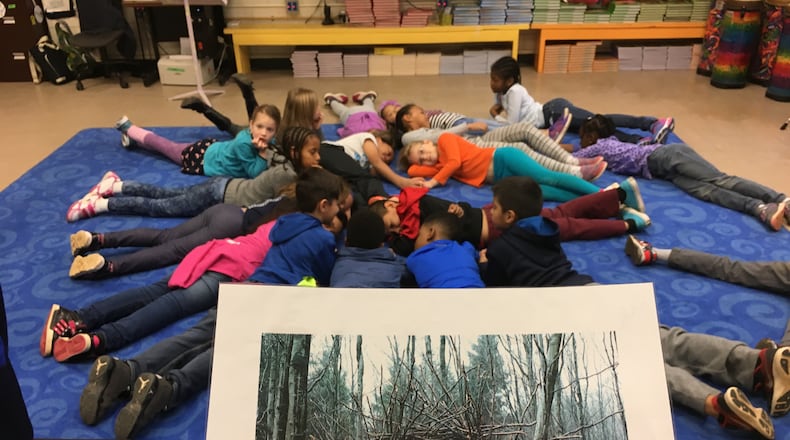Five years ago, Henderson Mill Elementary earned the state’s Department of Education certification as a Science, Technology, Engineering and Math school, one that focuses on and incorporates STEM concepts into the curriculum. Since then, the drive toward STEM education has grown and added a new twist: including “arts” to create a STEAM approach. At the same time, the requirements to earn such certifications have tightened.
“Things have shifted in the last five years, and the expectations are very different now,” said Mitch Green, principal of the 600-student Henderson Mill in DeKalb’s Northlake area. “It went from STEM being small-scale, with classes two or three days a week with a period-long project to more project-based learning around a comprehensive four-, six- or eight-week project. That also makes it much more meaningful work for kids than just reading about a topic.”
For the last year, Green and his staff have worked toward keeping the STEM credentials, and they also set new goal to earn the state’s first STEAM certification, a distinction they recently acquired after a rigorous process of interviews, observations and evaluations.
“We first heard about it a year ago, and we immediately revised our vision,” said Green. “And we were well down that road: We had started a three-year partnership with the Alliance Theatre.”
Having that partnership was a key component to introducing the “arts” into the STEAM mix. The program provides a teaching artist who works directly with students on ways they may not realize are incorporating math and science concepts in a visual project.
“For instance we’ve had students writing dialogue to explain the water cycle, then acting it out,” said Green. “The data indicates students are more proficient around concepts presented that way.”
Teacher Celithia Tahtinen has seen the positive results of incorporating artistic approaches into her science lessons with the youngsters in her first-grade classroom.
“We’ve integrated science as the kids create stop-motion plays,” she said. “It’s also helped the kids really open up. By letting them be creative and use writing and acting materials, it’s become a totally different class.”
Conversely, teacher Kristyn Lopez has embraced science in her fine and visual arts lessons.
“Science and art – it’s an easy marriage when you think about it,” she said. “Experiments are analytical and creative, and those elements work well together. For instance, our fifth grade students are studying cells, and in art class, they had to find tiny pictures and enlarge them. Cells were perfect: Not only can they use technology to enlarge them, they also have a better understanding of the subject. Whenever students can connect their art to another subject, their work is more meaningful.”
Art classes have also connected to the school’s urban garden project. “To raise awareness about portioning and world hunger, the kids made clay bowls designed for right-sized portions,” said Green. “It’s just one example of how the five areas of STEAM are interconnected. And we have projects like that going on every semester, in every level, even kindergarten.”
While creating a seamless learning structure, STEAM and its project-based approach is bring a new level of enthusiasm for assignments, said Green.
“Kids are going home energized and getting their parents involved,” he said. “That’s also increased our parent involvement. And most of all, it’s giving meaning to the work the students do.”
Information about Henderson Mill: hendersonmilles.dekalb.k12.ga.us
About the Author
The Latest
Featured


